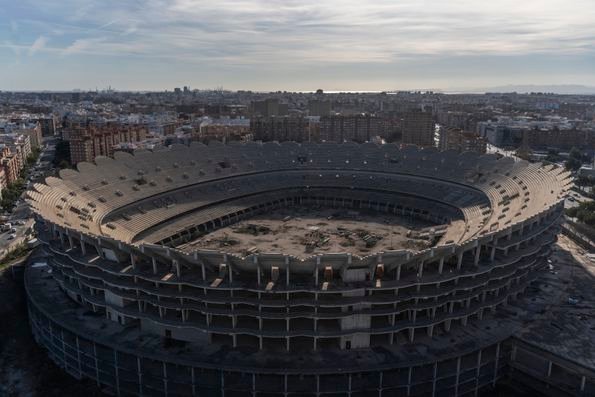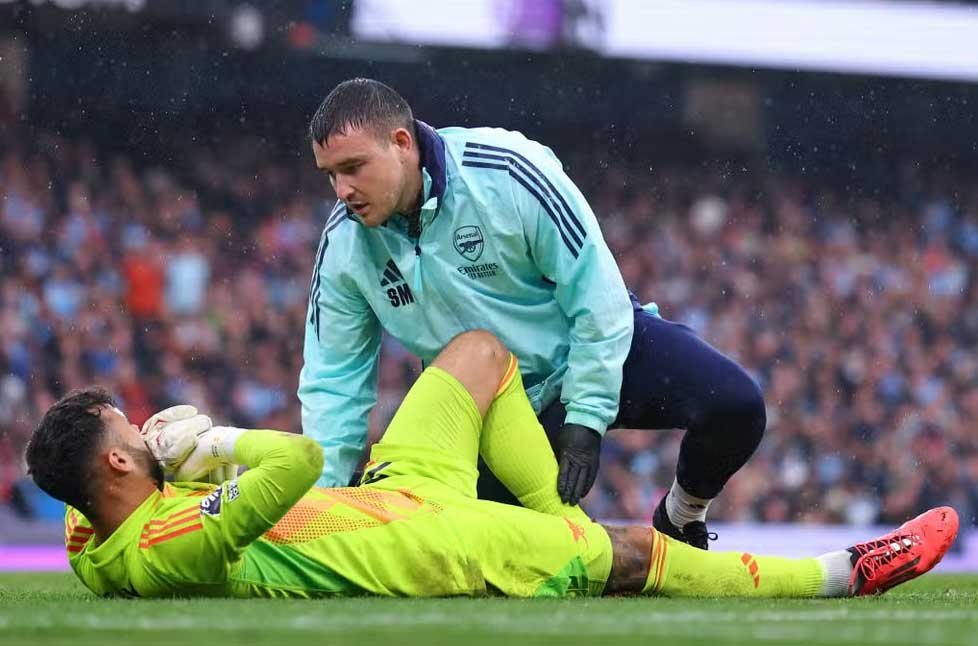Concrete skeleton to come to life 16 years later: construction work on Nou Mestalla progresses
Valencia’s new stadium is moving forward with its reconstruction after a long wait. It will take 21 years between the laying of the first stone and its completion. The investment is over €300 million and there will be 70,000 seats. But it doesn’t seem to be enough to host the 2030 World Cup…

Almost 16 years later, the new Mestalla is set to be built again. The project for Valencia ‘s new stadium, which began in 2006, was halted in 2009 due to financial problems. The skeleton of the stadium remains in the city centre. An unfinished concrete megastructure, a reminder of the failure of the construction of the new landmark of the city on the Mediterranean coast. That’s how it was until yesterday. More than 15 years after the shutdown, the machines are back in action, with the move scheduled for 2027/2028.
“Our temple is becoming something much bigger. It is our place in the world, created with a commitment: to honour the club and this eternal feeling.” This is how the club announces the restart of a project that, in 2009, was paralysed due to lack of payments. The arrival of Peter Lim, welcomed in 2014 by the cheering fans, promised developments in the new venue, but not even with several proposals for concessions and concessions did the work get back on track.
Less money and more stadium
When he became Valencia ‘s majority shareholder , Lim promised that the new stadium would be ready by the club’s centenary in 2019. A hypothesis that was discarded two years later. The first project, which envisaged 75,000 people in the stands, was reduced in 2017, to now allow 50,000, roughly the same number of spectators that Mestalla currently receives. The parking lot would be reduced in this new proposal, as would the quality of the materials. Decisions made in the name of cost containment, but that did not allow the project to move forward. A capital injection from the League that allowed an investment of 84 million euros in structures arrived in 2021, a year after the club had tried, unsuccessfully, to sell the old venue. Everything seemed to be going wrong, until, in 2024, happiness came. At least partially.
There is a project, but there is no World Cup
In February 2024, a new project for the Nou Mestalla was announced. 70,000 seats, all covered and with “Mediterranean orange” as the main colour, in keeping with the club’s identity and “the colour of the sunset that hits the city”, which would require an investment of over 100 million euros, on top of the approximately 200 million that had already been invested. In June, the city council approved the same project, but in July, news arrived that caused outrage: the city of Valencia would be excluded from the 2030 World Cup , organised jointly with Portugal and Morocco.
“The measure taken today is surprising after Valencia announced its acceptance of the conditions on 28 June, and especially after having obtained the construction licence for the Nou Mestalla, which includes deadlines for the execution of works that more than meet the time requirements established by FIFA for bids to host the World Cup,” the club said in a statement, complaining that “Spain’s third largest capital will be left without one of the most important football events.” “We hope that the decision announced today is not final, that it will be reconsidered and, therefore, that such an injustice will not be committed against a city that has always been linked to top-level sport and is recognised worldwide for its success in organising the competition.”



